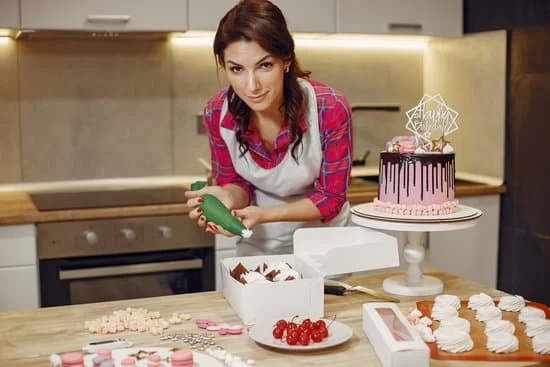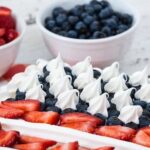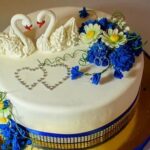Basic cake decorating is a fun and creative way to personalize your baked creations and add a touch of flair to any occasion. Whether you’re a novice baker looking to enhance your skills or a seasoned pro wanting to brush up on the basics, mastering the art of basic cake decorating is key. From piping techniques to using fondant, there are endless possibilities when it comes to decorating cakes.
In this article, we will explore everything you need to know about basic cake decorating, from essential tools and materials to choosing the right cake base for decorating. We’ll also delve into basic techniques such as piping, frosting, and fondant work, as well as share tips and tricks for creating stunning designs on your cakes.
By the end of this guide, you’ll be equipped with the knowledge and inspiration needed to create beautiful cakes that are sure to impress.
Whether you’re celebrating a birthday, wedding, or holiday gathering, having some basic cake decorating skills in your arsenal can take your dessert game to the next level. We’ll also discuss popular themes for basic cake decorating and provide insights on troubleshooting common mistakes that may arise during the decorating process. So roll up your sleeves, gather your tools, and let’s dive into the wonderful world of basic cake decorating together.
Essential Tools and Materials for Basic Cake Decorating
When it comes to basic cake decorating, having the right tools and materials is essential to create beautiful designs on your cakes. One of the most important tools for basic cake decorating is a turntable, which allows you to easily rotate your cake as you work on it. A set of offset spatulas is also crucial for smoothing frosting and creating clean lines on your cakes.
Piping bags and tips are another must-have for basic cake decorating. These allow you to add intricate designs, borders, and writing to your cakes with ease. Invest in a variety of tips to achieve different effects, from simple dots to intricate flowers. Additionally, a bench scraper can help you achieve smooth sides and sharp edges on your cakes.
When it comes to materials, having a good quality buttercream or fondant is key for basic cake decorating. Buttercream is versatile and easy to work with, while fondant allows for more intricate designs and a smoother finish. Food coloring gels are also important for achieving vibrant colors on your cakes. With these essential tools and materials in hand, you’ll be well-equipped to start experimenting with basic cake decorating techniques at home.
Remember that practice makes perfect when it comes to mastering basic cake decorating skills. Don’t be afraid to try new techniques and experiment with different designs. Whether you’re creating a simple birthday cake or an elaborate wedding cake, the key is to have fun while expressing your creativity through the art of basic cake decorating.
Choosing the Right Cake Base for Decorating
When it comes to basic cake decorating, choosing the right cake base is essential to ensure that your designs not only look great but taste delicious as well. The type of cake base you select will greatly influence how well your decorations adhere, how easy it is to work with, and how long the finished product will last. Here are some popular cake bases that work well for basic cake decorating:
- Butter Cake: A classic choice for basic cake decorating, butter cakes have a rich flavor and dense structure that can support heavy decorations.
- Sponge Cake: Light and airy, sponge cakes are perfect for delicate decorations and intricate designs.
- Chocolate Cake: For those who love chocolate, a moist chocolate cake provides a delicious canvas for all sorts of creative decorations.
Each type of cake base has its own unique characteristics, so consider the flavor profile you want to achieve and the intricacy of your design when selecting the right one for your next decorating project. Remember that a good foundation is key to creating a visually appealing and tasty finished product when it comes to basic cake decorating.
In addition to choosing the right type of cake base, consider factors like texture, crumb density, and whether you need a sturdy surface for intricate detailing or a softer base for smoother finishes. Experimenting with different recipes and techniques will help you find the perfect balance between taste and aesthetics when it comes to basic cake decorating. Don’t be afraid to get creative and try new combinations to discover what works best for your personal style and preferences.
Basic Techniques for Cake Decorating
Basic cake decorating involves a variety of techniques that can elevate a simple cake into a work of art. Piping, frosting, and fondant are three essential methods that every aspiring baker should master to create beautifully decorated cakes. Piping involves using a pastry bag and various tips to apply buttercream or royal icing in intricate designs on the cake’s surface. From delicate borders to elaborate flowers, piping offers endless possibilities for creativity.
Frosting is another key element in basic cake decorating. Buttercream frosting is a popular choice due to its versatility and ease of use. By mastering different frosting techniques such as smooth coating, textured finishes, and ombre effects, decorators can achieve stunning results on their cakes.
Fondant is a pliable sugar paste that can be rolled out to cover cakes smoothly, creating a flawless canvas for decoration. In addition to covering cakes, fondant can also be shaped and molded into intricate figures, shapes, and textures.
Understanding the basics of piping, frosting, and fondant opens up a world of creative possibilities in cake decorating. With practice and patience, decorators can develop their skills and techniques to bring their design ideas to life on cakes. Experimenting with different tools, colors, and textures will help decorators refine their craft and create visually striking cakes that are sure to impress any audience.
| Techniques | Description |
|---|---|
| Piping | Using a pastry bag and tips to apply buttercream or royal icing in designs. |
| Frosting | Applying buttercream in various techniques like smooth coating or textured finishes. |
| Fondant | A pliable sugar paste used to cover cakes smoothly or create intricate shapes. |
Tips and Tricks for Creating Stunning Designs on Cakes
One of the key aspects of basic cake decorating is mastering the art of creating stunning designs on cakes. Whether you are a beginner or have some experience in cake decorating, there are always tips and tricks that can help elevate your creations.
One important tip is to invest in quality tools such as piping bags, tips, offset spatulas, and turntables to make the decorating process smoother and more professional. These tools will aid in creating intricate patterns and designs with ease.
Experimenting with different textures and finishes can also add visual interest to your cakes. For example, using a variety of frosting techniques such as buttercream flowers, rosettes, or even ombré effects can take your cake to the next level. Additionally, incorporating edible decorations like sprinkles, edible glitter, fresh fruits, or chocolate shavings can enhance the overall look of your design. By playing around with different elements, you can create a one-of-a-kind masterpiece that will impress your guests.
When it comes to color choices for your cake designs, consider using a color palette that complements the occasion or theme of the event. Soft pastel shades work well for baby showers or weddings, while bold and vibrant colors are perfect for birthdays or celebrations.
Remember to practice patience and precision when executing your design ideas to achieve clean lines and flawless finishes. With practice and creativity, you can master basic cake decorating techniques to create visually stunning cakes that taste as good as they look.
| Tips | Tricks |
|---|---|
| Invest in quality tools | Experiment with textures and finishes |
| Use a color palette that complements the occasion | Practice patience and precision |
Popular Themes for Basic Cake Decorating
When it comes to basic cake decorating, one of the most exciting aspects is exploring different themes for your creations. Whether you are baking a cake for a birthday celebration, a wedding, or a holiday gathering, there are endless possibilities to showcase your creativity and skills. By selecting the right theme for your cake, you can create a memorable dessert that will leave a lasting impression on your guests.
Birthdays
For birthday cakes, the key is to tailor the design to suit the personality and interests of the recipient. You can opt for vibrant colors, fun shapes, and playful decorations for children’s birthdays, while elegant designs with floral accents or personalized touches work well for adult celebrations. Consider incorporating age-specific elements like numbers or characters that reflect the birthday person’s hobbies or favorite things.
Weddings
Wedding cakes hold a special significance and serve as a centerpiece at the reception. When decorating a wedding cake, it’s essential to coordinate with the overall theme of the event. Simple and elegant designs with white or pastel colors are classic choices, but modern couples may opt for unique styles like metallic accents, geometric patterns, or even themed cakes that represent their love story.
Holidays
During holidays like Christmas, Valentine’s Day, Easter, and more, you can get creative with seasonal elements to bring festive cheer to your cakes. Incorporate traditional symbols like snowflakes for winter-themed cakes or flowers for spring-inspired designs.
For Halloween or Thanksgiving celebrations, consider using themed toppings like pumpkins or spiders to match the spirit of the occasion. Basic cake decorating techniques such as piping and fondant can be used to create intricate holiday-themed decorations that will delight your family and friends.
Troubleshooting Common Cake Decorating Mistakes
When it comes to basic cake decorating, even the most experienced bakers may encounter some common mistakes along the way. Here are some troubleshooting tips to help you navigate through them:
1. Crumbly frosting: If your frosting seems too dry and crumbly, try adding a few drops of milk or cream at a time until you reach the desired consistency. Be careful not to add too much liquid, as this can make the frosting too runny.
2. Air bubbles in fondant: Air bubbles can create unsightly bulges on your fondant-covered cake. To remove them, gently poke a small hole with a toothpick and smooth out the area with your finger.
3. Uneven layers: If your cake layers are uneven or domed after baking, use a serrated knife to level them off before stacking and decorating. This will ensure a more professional-looking end result.
4. Piping problems: When piping designs on your cake, be sure to keep consistent pressure on the piping bag for even lines. Practice on a separate surface before decorating your actual cake to improve your technique.
Remember that practice makes perfect when it comes to basic cake decorating. Don’t be discouraged by mistakes – they are all part of the learning process. With patience and perseverance, you’ll soon be creating stunning designs on your cakes with confidence and skill.
Resources for Further Learning and Inspiration
Online Courses
For individuals eager to expand their basic cake decorating skills, there are numerous online courses available that provide in-depth tutorials and guidance. Websites like Craftsy, Udemy, and Skillshare offer courses for beginners looking to learn the fundamentals of cake decorating, as well as more advanced techniques for those seeking to take their skills to the next level.
These courses often cover topics such as piping techniques, working with fondant, creating intricate designs, and much more. Enrolling in an online course can provide aspiring cake decorators with a structured learning experience and the opportunity to practice their skills at their own pace.
Books
Another valuable resource for those interested in basic cake decorating is books dedicated to the art form. There are countless books available that provide step-by-step instructions, tips, and inspiration for creating beautifully decorated cakes.
Whether you prefer traditional printed books or digital e-books, there is a wide selection of titles covering everything from beginner’s guides to advanced techniques. Some popular books include “The Cake Decorating Bible” by Angela Nilsen, “Cake Confidence” by Mandy Merriman, and “The Contemporary Buttercream Bible” by Valeri Valeriano and Christina Ong.
Blogs and Social Media
In today’s digital age, blogs and social media platforms have become excellent sources of inspiration for cake decorators. Many talented bakers and decorators share their creations, tips, and tutorials on blogs and across various social media channels like Instagram, Pinterest, Facebook, and YouTube.
By following these accounts and engaging with the community online through comments and discussions, aspiring decorators can stay up-to-date on the latest trends and techniques in cake decorating. Additionally, joining online forums or groups dedicated to cake decorating allows individuals to connect with like-minded enthusiasts, share ideas, seek advice, and showcase their own creations for feedback from others in the community.
Conclusion
In conclusion, mastering basic cake decorating skills opens up a world of creativity and joy for both amateur and professional bakers alike. Whether you are looking to create a simple yet elegant birthday cake or a stunning masterpiece for a special occasion, the techniques and tips discussed in this article provide a solid foundation for your baking endeavors.
From piping intricate designs to working with fondant like a pro, the possibilities are endless when it comes to adorning cakes with your personal touch.
One of the most rewarding aspects of delving into basic cake decorating is witnessing the delight on the faces of those who enjoy your creations. The ability to transform a plain cake into a work of art not only enhances the visual appeal but also adds an extra layer of flavor and charm to any celebration. With practice and patience, you can develop your own unique style and establish yourself as a skilled decorator in your community.
As you continue to hone your skills in basic cake decorating, remember that there is always room for growth and improvement. Don’t be afraid to experiment with new techniques, colors, and designs to push your creativity further.
Whether you draw inspiration from online courses, books, blogs, or social media platforms dedicated to baking enthusiasts, the resources for learning and finding fresh ideas are endless. Embrace the journey of learning and creating beautiful cakes with basic decorating skills, and let your passion for this art form shine through in every confectionary masterpiece you craft.
Frequently Asked Questions
What Does a Beginner Need for Cake Decorating?
A beginner in cake decorating will need some essential tools to get started. These may include a turntable, offset spatula, piping bags and tips, bench scraper, cake leveler, and various types of fondant or icing. It’s also important to have a good quality cake mix or recipe to work with.
How to Decorate Cake in Home Simple?
Decorating a cake at home can be made simple by starting with a smooth frosted base. One can then use simple techniques like piping borders with buttercream frosting, adding edible decorations like sprinkles or edible pearls, creating texture using different tools like combs or stencils, and even using fresh fruits or flowers for an elegant touch.
What Are the 7 Different Cake Decorating Techniques?
There are several different cake decorating techniques that one can explore to create beautiful designs on cakes. Some popular techniques include buttercream piping (like rosettes or basketweave), fondant covering and sculpting (for intricate designs and figures), royal icing flooding (great for intricate details), brush embroidery (for a delicate floral effect), airbrushing (for smooth color gradients), edible printing (using images printed on edible paper), and wafer paper crafting (for delicate embellishments).
Each technique offers its own unique way to decorate cakes beautifully.

Welcome to our cake decorating blog! My name is Destiny Flores, and I am the proud owner of a cake decorating business named Cake Karma. Our mission is to provide delicious, beautiful cakes for all occasions. We specialize in creating custom cakes that are tailored specifically to each customer’s individual needs and tastes.





